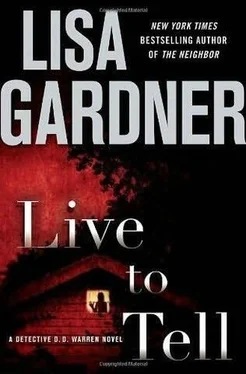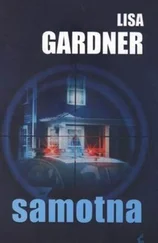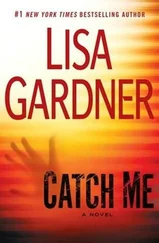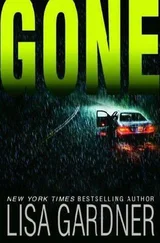“When will he regain consciousness?” D.D. asked.
“Haven’t a clue. I’d have to look at his chart. I’m guessing he’s heavily sedated, which is probably for the best.”
“But we need to ask him some questions,” she persisted impatiently.
Dr. Poor arched a brow. “Half the man’s brain has been turned into the Panama Canal. What do you think he could tell you at the moment?”
D.D. and Phil exchanged glances. It was hardly surprising news, but disappointing.
“Can you describe the entry wound?” Phil asked.
D.D. chewed her bottom lip. She knew what Phil was going for. From a detective’s perspective, it would’ve been better if their suspected shooter had died at the scene. In which case, the ME’s office would’ve bagged the man’s hands and preserved the contact wound on the left temple. Back in the morgue, the ME would then test the shooter’s hands for gunpowder residue while conducting a forensic examination of the entry wound. In twenty-four hours or less, they’d have scientific evidence that Patrick Harrington had died from a self-inflicted gunshot wound to the head.
Furthermore, Harrington’s clothes would have been carefully preserved, then analyzed for blood spatter and other evidence related to the homicidal rampage. Bada bing, bada boom, the blood spots on Subject’s A’s clothing tied to the wounds inflicted on Victims B, C, D, and E, meaning Patrick Harrington stabbed his entire family before shooting himself in the head.
Case closed, detectives move on.
Instead, their suspected family annihilator had been rushed to the hospital by the EMTs. Where his bloody clothing had been cut off and tossed aside. Where his hands and wounds had been washed and scrubbed. Where countless opportunities to collect evidence had been sacrificed in an attempt to save the sorry bastard’s life.
Now they were left with an ER doc’s first impressions of the subject and his injuries. D.D. would’ve preferred dealing with the ME.
Dr. Poor pried the lid off his coffee, blew on the sugared brew, seemed to be searching his memory. “I’d have to check the notes, but the entry wound was several centimeters in diameter, burn marks around the edges-”
“Close contact,” Phil interrupted.
The doctor nodded. “I’d say a close contact-entry wound.”
Phil made a note.
But then the doctor shook his head. “You want to know if this guy shot himself? That’s what you’re thinking, right? A self-inflicted gunshot wound?”
“That’s what we’re trying to determine,” Phil stated carefully.
“To judge from the CT scan, I’d say that’s unlikely.”
“What do you mean?” D.D. said.
“It’s a matter of trajectory. Think about it. The entry wound was to the left temple, and the bullet came to rest in the left posterior region. That’s a pretty straight line. If you think about trying to replicate that shot…” The doctor set down his coffee, cocking his right fingers into a makeshift gun and trying to bend his right wrist enough to form a straight shot into his left temple. “It’s not that it can’t be done, but it’s awkward. Especially given that the person is probably on an adrenaline rush, has endorphins dumping everywhere from trauma, stress, anticipation… Most self-inflicted gunshot wounds we see are angled. Maybe the person flinches at the last second in anticipation, jerks the barrel slightly down or sideways. But a clean, direct hit…”
He appeared skeptical, picking back up his coffee cup, taking another sip. “Then again, it’s not the easiest thing to determine the pathway of a bullet through the brain.”
“What do you mean?” D.D. asked.
“I mean, after the initial trauma, the increased intracranial pressure collapses the path the bullet took through the brain. So we can see where the bullet started, the entry wound, and where it ended, the resting place, but it’s possible it bounced around in between. Maybe not probable,” he hedged. “But possible.”
“You see a fair amount of self-inflicted gunshot wounds?” D.D. asked him.
“Enough, I think.”
“How does this compare? Gut reaction, doesn’t have to be scientific. It’s just us three standing here.”
The doctor waffled again. “Can’t really say there’s a quintessential self-inflicted wound. Other than it’s almost always a male. But gun type, location of wound… Too many variables to make that call.”
D.D. scowled, wanting a more definitive answer, but again, not terribly surprised. Doctors hated to be nailed down. “Did you notice his hands?”
“Nope, too busy looking at his head.”
“Did he say anything, have any moments of consciousness?”
“Not when I was around.” The doctor had his coffee between both his hands and seemed ready to motor again. He headed toward the cafeteria exit. They followed, more slowly this time.
At the last moment, he turned. “Might want to check with the charge nurse, though,” he called back. “Find out who admitted him. That person might know more.”
The doctor disappeared up the stairs.
They went in search of Nurse Terri.

Turned out, Rebecca Moore, currently working a double, had been the ER nurse who’d admitted Patrick Harrington. She pulled herself away from a vomiting three-year-old to answer their questions.
D.D. recoiled at the smell. Phil remained steadfast. He had four kids at home, and liked to joke that he worked homicide to escape the gore.
“You admitted a gunshot victim earlier this evening: Patrick Harrington,” D.D. prodded. “We were wondering if you could tell us anything about him.”
“GSW to the head?” Rebecca wanted to know.
“That’s our man.”
“EMTs brought him in. I noted his vitals, then paged Dr. Poor, given the head injury. He referred the patient to Dr. Badger for surgery.”
“Was the patient conscious when he first came in?”
“No, ma’am.”
“Did he ever regain consciousness while in the ER?”
“No, ma’am-Oh wait, when they were wheeling him out for the CT scan. He opened his eyes then.”
“What did he do?”
“He was moving his lips, looked like he was trying to speak.”
“Did you hear what he said?” Phil asked sharply.
The nurse shrugged. “I can’t be certain. Sounded like ‘hussy.’”
VICTORIA
A knife is missing. It’s four a.m., and I’ve crept out of bed to take inventory. Evan woke up at eleven, midnight, two a.m., and three. Now he will probably make it until five. At least I hope so.
I haven’t slept, but that’s nothing unusual. The first few weeks of sleep deprivation are the hardest. Now it’s been so long since I’ve had more than three consecutive hours of rest that it’s the nights I do sleep that mess me up. I find myself foggy, barely able to pull it together. It’s as if, having finally gotten sleep, my body realizes what it’s been missing and rebels.
I don’t have time for rebellions, so I’ve given myself middle-of-the-night chores. Several times a week, this includes inventory of the kitchen utensils.
He must have gotten the knife from the drying rack. I try to be diligent, but I’m rarely functioning at one hundred percent. My fine motor skills have eroded to the point that I drop small objects half a dozen times a day. When people speak to me, I have moments when I see their mouths moving, but I can’t process English.
Evan once watched a show describing how Navy SEALs must survive more than ninety-six hours without sleep as part of Hell Week. I wanted to scream at the TV, Ninety-six hours, my ass. Try eight years!
Читать дальше













